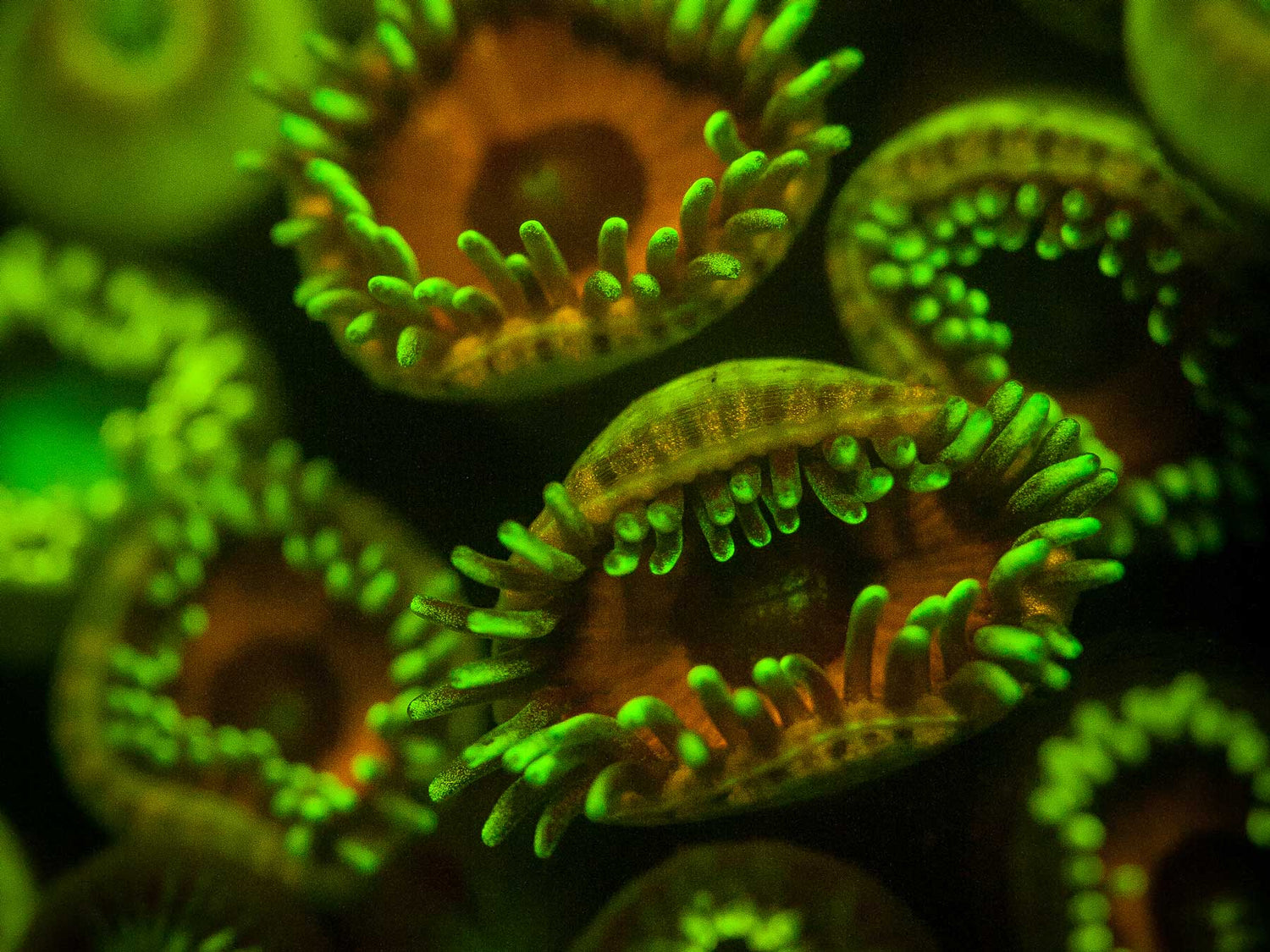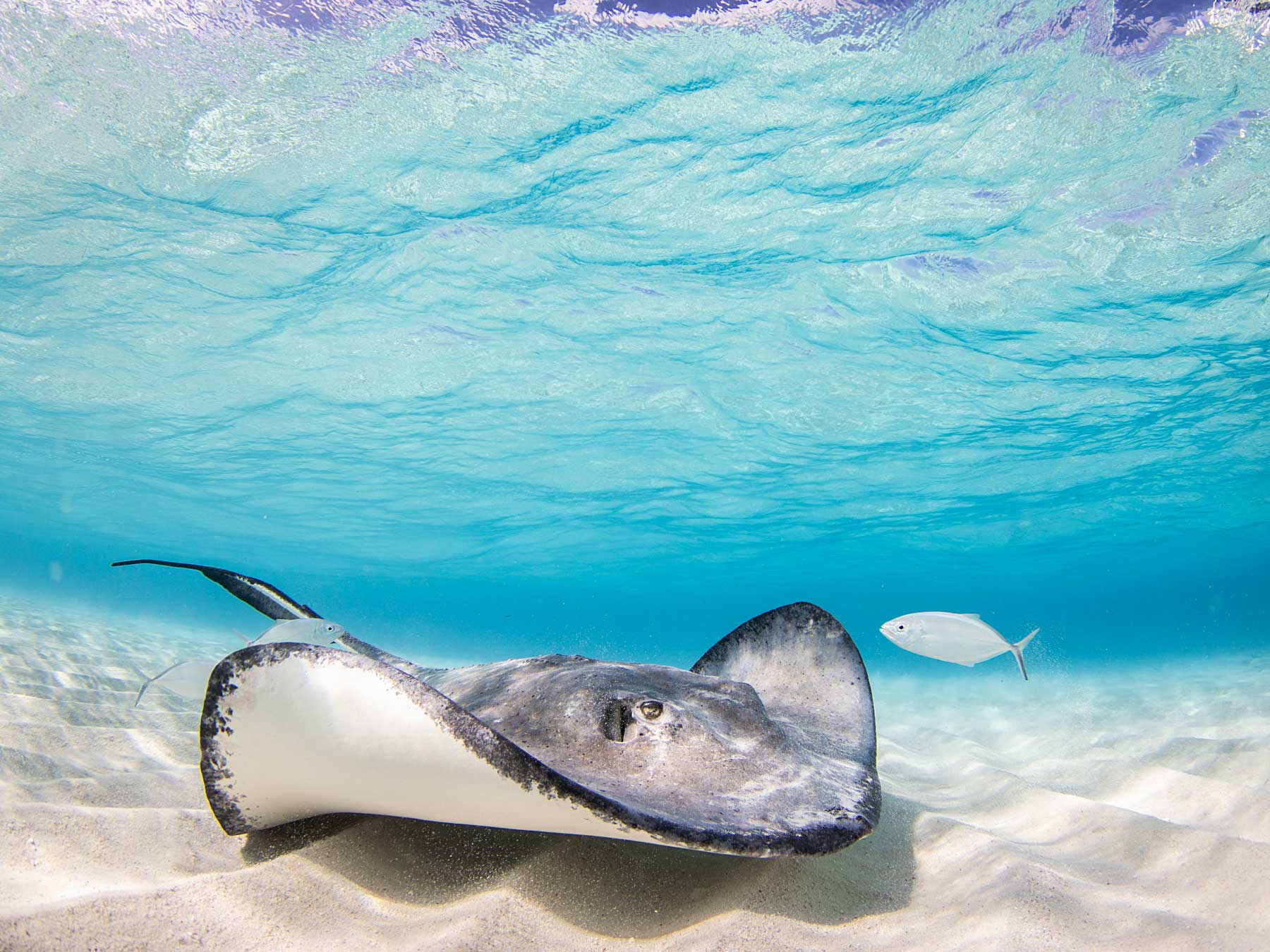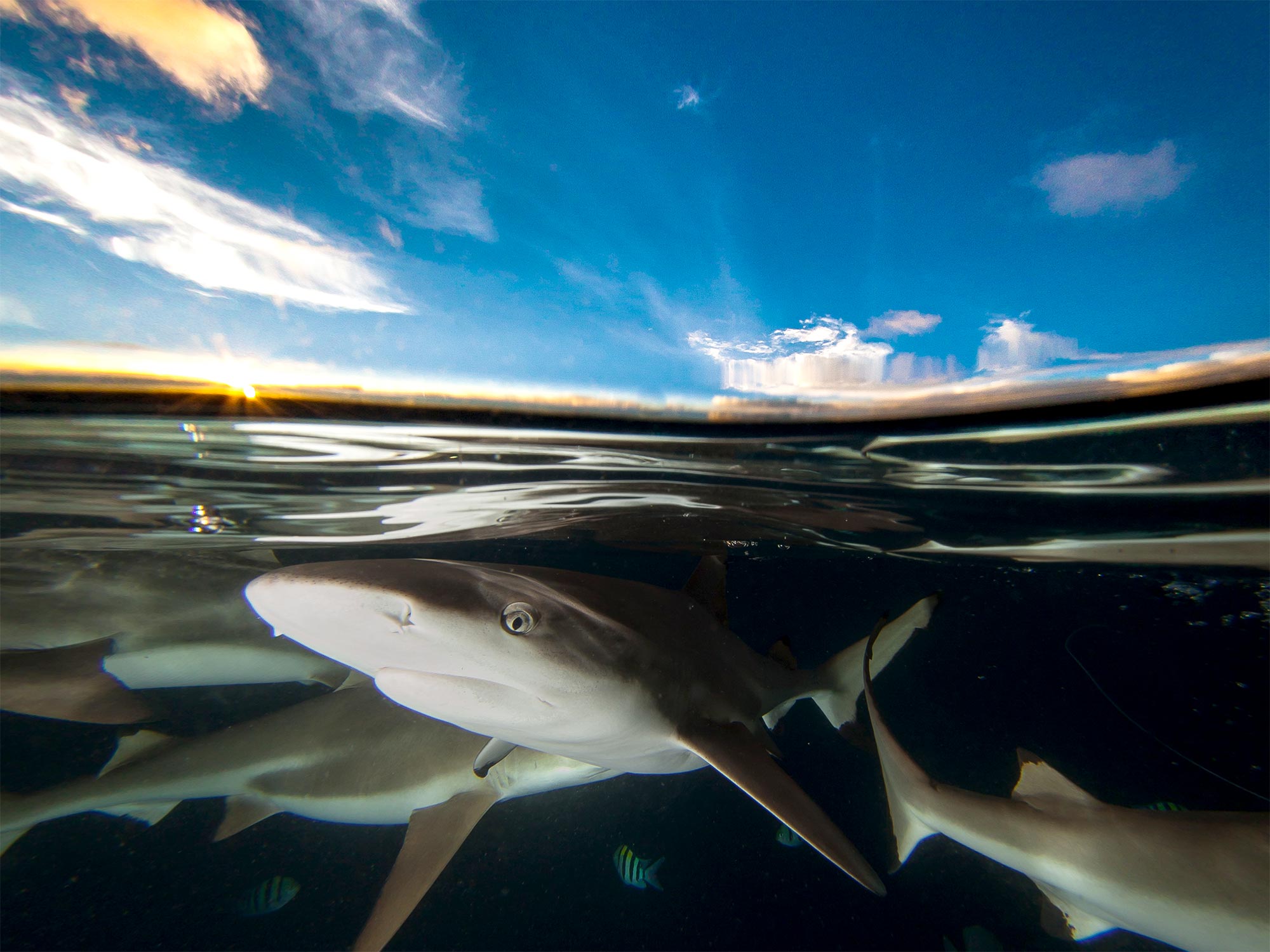If you haven't been to a rave lately, you may not be familiar with the "fluoro" scene. Fluorescence is the glowing that you see in glow sticks, jellyfish, and forensic science. A variety of organisms and materials both above and below water exhibit fluorescence, most commonly with the introduction of a particular wavelength of light.
To experience fluorescence underwater, you'll need lights or strobes with dichroic excitation filters attached. You'll also need yellow barrier filters attached to your mask and housing lens port.
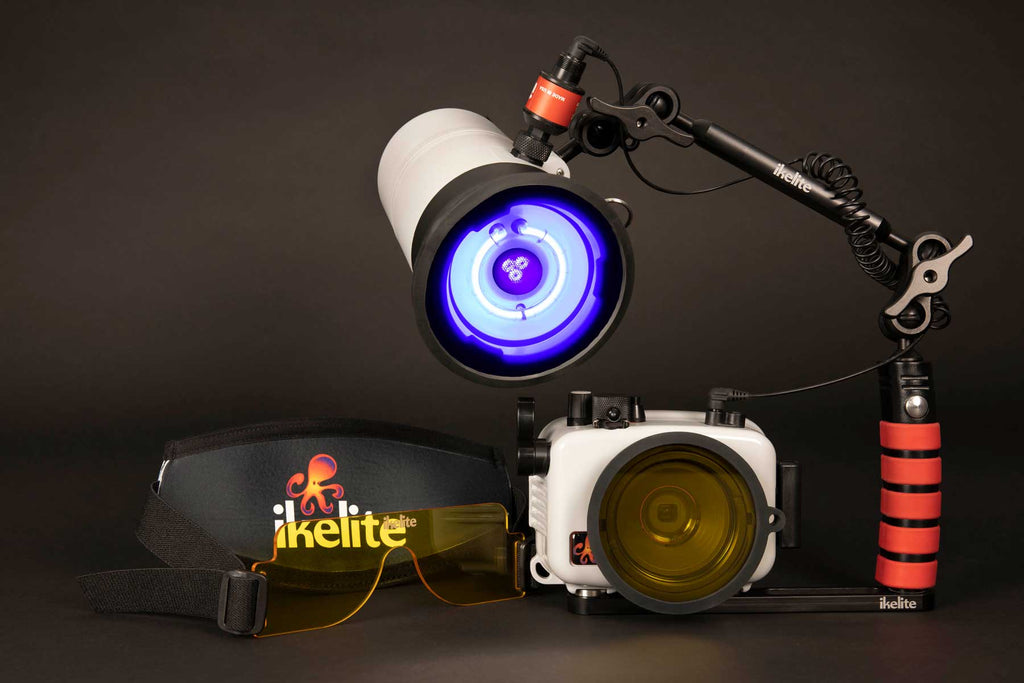
The Olympus Tough TG-6 with DS161 strobe and fluorescence filters.
Once you're set up, you'll want to wait until the sun goes down and then head out for a night dive. Search around and see what you find. The glow you'll see is mostly green but also can be blue and/or red.
The really interesting thing is that some things fluorescence brightly and some not at all. You may see two of the same types of coral, one glowing bright green and one barely visible! Lizardfish are particularly famous for their wild fluorescence patterns.
Where
All waters, but more subjects in saltwater environments.
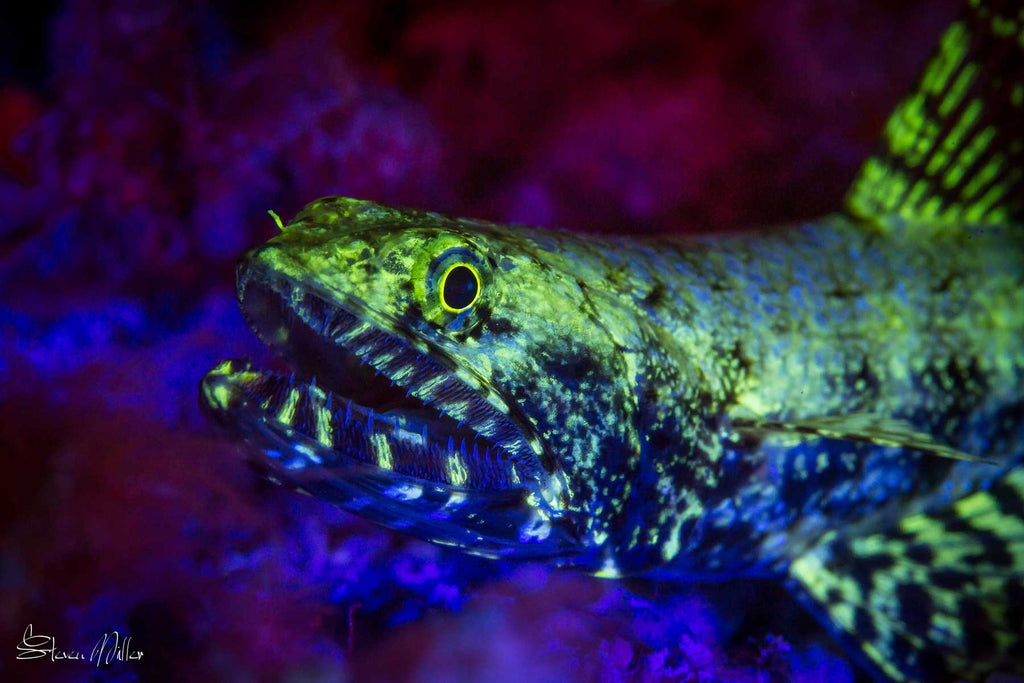
Lizardfish are well known for their fluorescence; they always seem to fluoresce very brightly. The colors in the background are from Gamma lights with colored filter gels on the front.
DSLR + Mirrorless
ISO: 200-1600 depending on how much strobe power you have
Mode: M Manual or Av Aperture Priority
Aperture: f/8 to f/14 based on light and subject distance
Shutter Speed: 1/60 to 1/125
Lens: Macro 60mm, 90mm, 100mm or 105mm
Point + Shoot
ISO: 400-1600
Mode: M Manual or Av Aperture Priority
Aperture: f/8 to f/18
Shutter Speed: 1/60 to 1/250
Focal Length: Macro or microscope mode; with or without add-on close-up lens
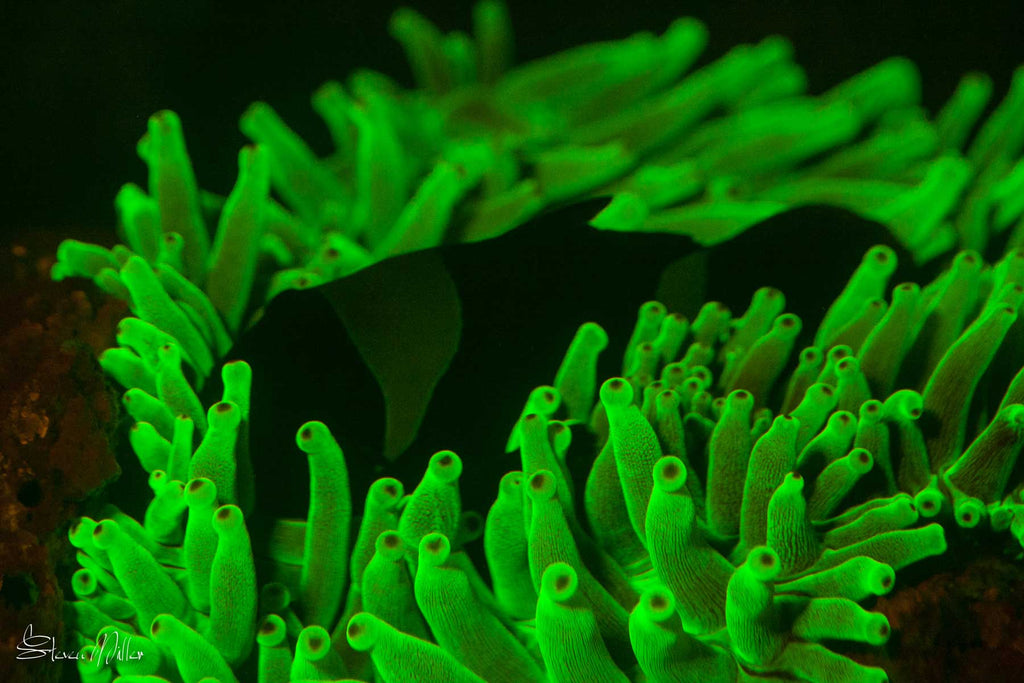
Did you notice the clownfish in this photo? He's nearly invisible in the filtered light because he isn't fluorescing.
Technique
The first challenge will be to orient yourself, since you will be night diving with a filter over your mask that obscures most of the bottom. The next step is to swim around until you find something that is actively fluorescing. This means you will need a constant-on dichroic light for searching. It could be the modeling lights of your strobes or a separate light with fluorescence filter.
Strobes (or constant on lights) are absolutely required for fluorescence photography. The light of even very powerful strobes will be very dim after passing through the fluorescence dichroic filters, so be prepared to use higher ISOs than you might expect. Since so much light is lost, we recommend pointing the strobes directly at your subject and blasting them. TTL works fine, but you will probably find they are firing at close to full power.
If you have the light for it, stop the lens down as far as you can (larger f/numbers). Even f/22 would be great for depth of field.
Currently wide angle fluorescence work is fairly uncommon. Keep in mind that everything that's not actively fluorescing will show up as darkness in the image. Controlling the light is difficult in addition to the challenge of finding a scene with a good spread of actively fluorescing subjects. It is possible with multiple light sources and possibly even one or two support divers holding lights of their own.
Adding luminance - that is additional lights with various colors of filters - can layer on even more interest to your fluorescence photos.
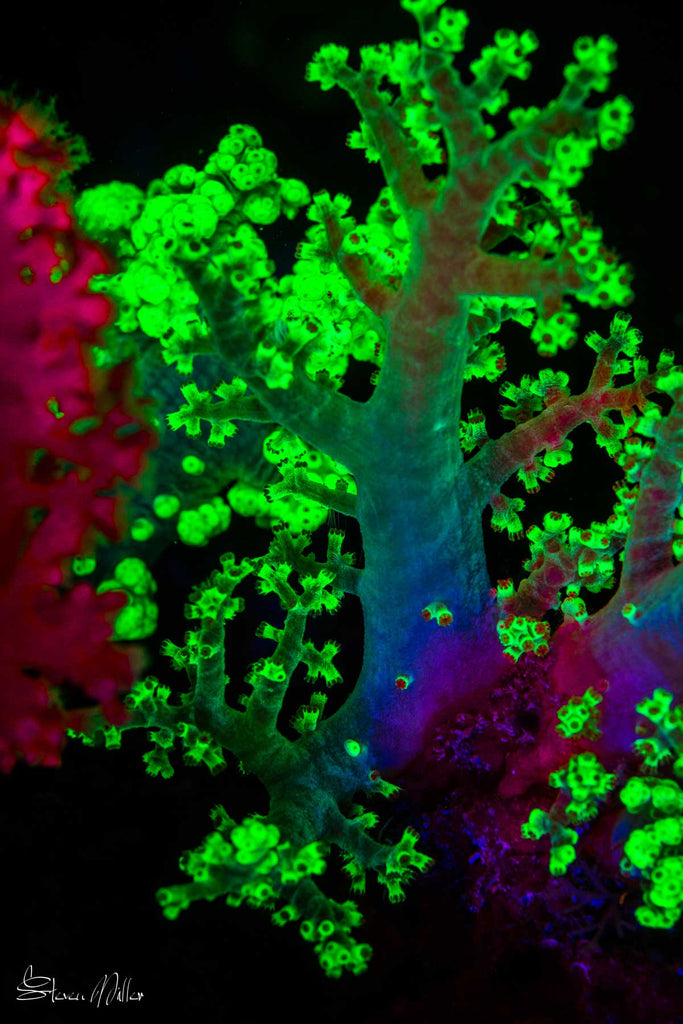
Gamma lights with red and blue filters add additional dimensions to this coral scene which would otherwise primarily exhibit the green fluorescence glow.
All images Copyright © 2019 Steve Miller
Additional Reading
Fluorescence and Luminance Underwater Photography
Super Macro Underwater Photography Techniques
How To Get the Best Shots When Shooting Wrecks
Black and White Conversion for Underwater Photography
Natural Light Photography Underwater











